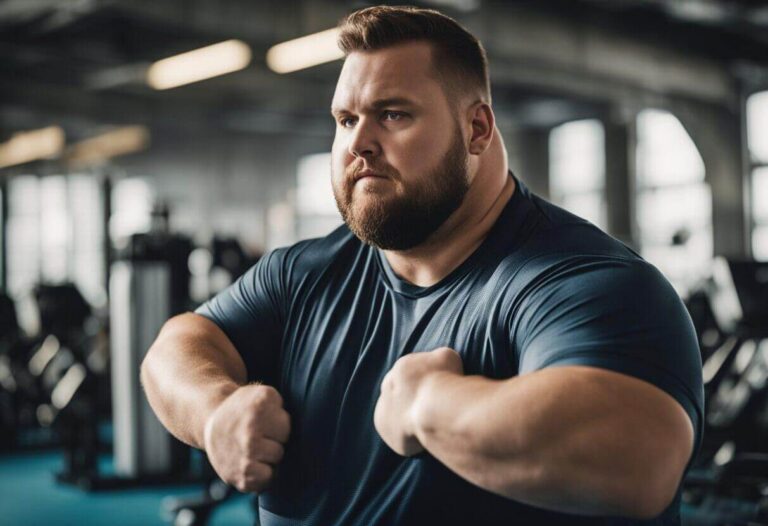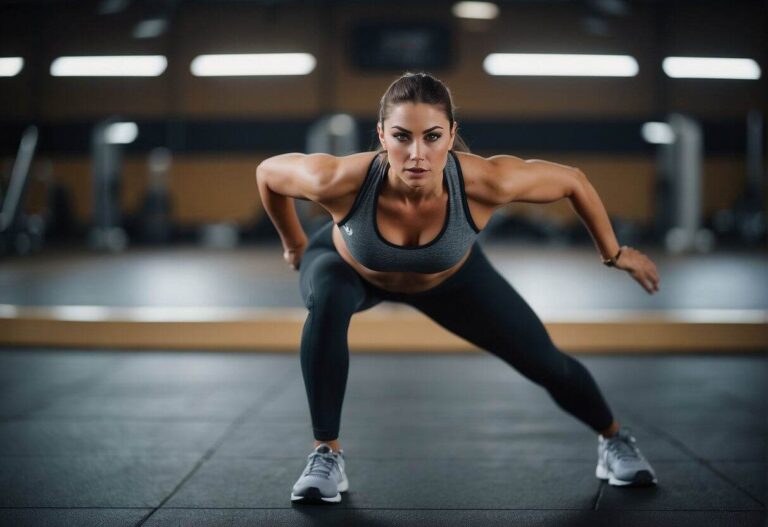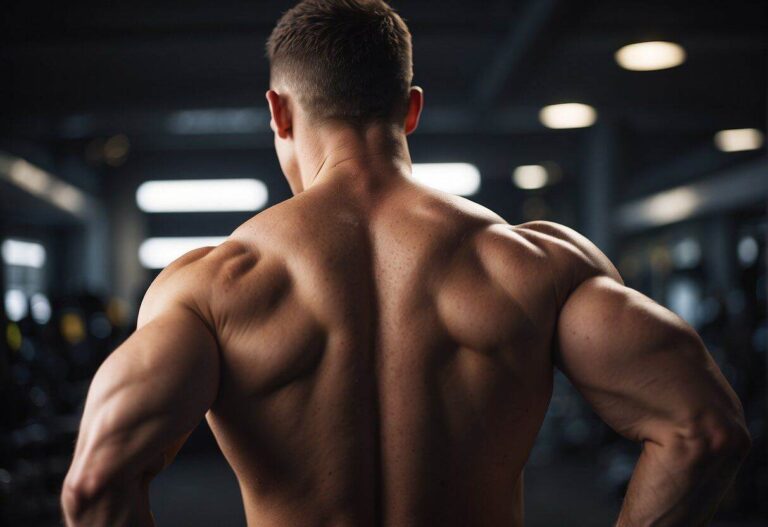Experiencing a calf cramp during leg curls is more common than you might think. Often, it’s as simple as the position of your toes—pointing them downwards rather than upwards can significantly up the likelihood of a cramp seizing your calf muscle.
Other factors that compound the risk include dehydration or an imbalance in electrolytes. The sheer length of time you keep your foot static, especially during those longer, more punishing sets, can also contribute to the risk.
It’s crucial to understand what’s going on when your calves tighten up mid-exercise. Is this cramping a sign to be concerned about or just a fleeting nuisance?
Equally, if you’re looking to prevent such involuntary contractions from interrupting your workout in the future, it’s essential to grasp the why and the how.
Tailoring your approach to hydration, posture, and training could be fundamental to keeping cramps at bay, allowing you to focus on enhancing your performance without the fear of sudden pain.
Assessing Calf Cramps During Leg Curls
Experiencing calf cramps or a ‘charley horse’ mid-exercise? It’s common but can hinder your workout. If calf cramps strike frequently or persist, they might signal a deeper issue needing a doctor’s attention.
Are leg curls causing you discomfort? Though infrequent calf cramps shouldn’t alarm you, repeated episodes deserve a health check.
Remember, addressing symptoms of leg cramps helps maintain a pain-free training regime.
Reasons Your Calves Might Cramp During Leg Curls
1. The Role of Your Calf Muscles
Your calves, particularly the gastrocnemius muscle, play a crucial role in leg curls. This muscle helps with the flexion of your knee, meaning it bends the knee towards your backside in this exercise. It’s also responsible for pointing your toes downwards.
Sometimes, the unusual pressure from a leg curl might be more than your calves are accustomed to. If cramping occurs, consider reducing the weight until your muscles adjust.
2. Static Foot Position
Holding your foot in a pointed position (where toes are flexed away from you) for extended periods can lead to cramping. This is notable during high-rep leg curls or when you use slow-tempo training.
To counter this, keep your toes flexed upwards—towards your shin—which may help keep the cramping at bay.
3. Your Hydration Status
Cramps can often be a signal that you’re dehydrated. This occurs when your body is expelling more fluid than you’re ingesting.
If you find yourself cramping, especially if accompanied by dizziness, it might be a hint to up your water intake before and during your workouts.
4. Electrolyte Balance
Electrolytes such as magnesium, potassium, and sodium are key for muscle function and hydration. Intense workouts can deplete your electrolyte levels through sweating, which might increase the likelihood of cramping.
You could incorporate a pre-training meal that’s rich in these electrolytes to potentially reduce the cramp risk.
Preventing Calf Cramps During Leg Curls: A Guide
Pre-Curl Calf Preparation
Before engaging in leg curls, readying your calves is essential. When the calf muscle, particularly the gastrocnemius, is employed during knee flexion at the top of the curl, cramps are prone to occur.
To avert this, perform a lunging calf stretch, ensuring the knee remains flexed to targetedly stretch the necessary muscles.
If you’re looking for additional exercises to enhance your ankle’s range of motion, you might find my piece on improving ankle mobility insightful, as it provides a comprehensive look at calf stretches.
The Role of Ankle Position
Dorsiflexion, which is the upward bending of your foot at the ankle, plays a significant role while performing leg curls. If you’ve not thought about foot positioning before, you’ll find that this adjustment helps reduce cramp risk and increase hamstring involvement.
Maintaining a dorsiflexed posture aids in lessening the load on your calves, keeping cramps at bay.
Hydration Tactics
Are you drinking enough before hitting the weights? Proper hydration can lower the chance of cramps and potentially boost your performance.
Try to consume between 200ml and 350ml of water about 15 to 30 minutes before starting your workout. Continue to hydrate during training, aiming for 100ml to 250ml every quarter of an hour or so.
Electrolyte Supplementation
When you sweat, you don’t just lose water; electrolytes go with it. Counteract this loss by introducing electrolytes into your routine before you start, or sip on an electrolyte-infused drink as you train.
Diet adjustments can also play a part—savour a banana or roasted sweet potatoes, or perhaps a slightly saltier snack to replenish sodium levels.
Options for Continuing When Calves Persistently Cramp
Consider Switching Exercises
Should you find your calves still seizing up despite your best efforts, it might be time to look at a change in your exercise routine.
Why not give Romanian Deadlifts a go? They’re excellent for building strength in those hamstrings and they work wonders as a precursor to smashing your deadlift records.
If you’ve access to a Glute Hamstring Raise machine, that’s another sterling choice, especially for mimicking the knee-flexing action of a leg curl, but kinder on your calves.
Also, think about trying different leg curl machines. It’s curious how a seated version can bring on cramps, but lying flat, you’re just fine. If all else fails, get inventive with bands or weights to find a comfy variation that won’t leave you cramping.
Enlist the Aid of Massage
Ever noticed how a good rubdown can make the world of difference to tight muscles? That’s because massage is terrific at easing tension and could just be the salve your rebellious calves need.
When it comes to persistent cramping, it’s not just about treating symptoms. If you haven’t had any luck with ice, rest, or even heat, it may be time to scrutinize what’s going on beneath the surface.
A professional massage therapist can offer bespoke treatment, relieving your calves and preparing them to perform cramp-free next time.
Yet, if cramps keep playing havoc with your workout, it wouldn’t hurt to have a chat with your doctor. On occasion, these twinges can signal a more serious health condition lurking in the wings, and it’s always better to play it safe.
Common Inquiries
Leg Curl Impact on Calf Muscles
You might wonder if leg curls have an effect on your calves. Although they do engage the calves to a degree, it’s mostly the hamstrings that are getting the workout.
Your calves assist during knee flexion, but for stronger calf muscles, you’d want to focus on exercises specifically designed for calf development.
It’s much like how you’d often include more direct work to target any other muscle group optimally.
Concluding Thoughts on Muscle Relaxation
In managing calf cramps during leg curls, remember it’s not just about the exercise—it’s how you prepare for it.
Have you considered a quick calf stretch before your session? It might just keep those cramps at bay.
Or what about the position of your ankle? Keeping your ankle dorsiflexed could be a small change with significant impact.
Staying on top of your hydration can’t be overstated, either.
Sip water regularly, and don’t forget those vital electrolytes—they’re your muscles’ best friends.
Persisting cramps despite these measures? A soothing massage or a chat with a healthcare provider could be your next step to comfort.
Ever tried swapping your routine with different hamstring-focused exercises? It could make all the difference. Your muscles might thank you for a little variety.







